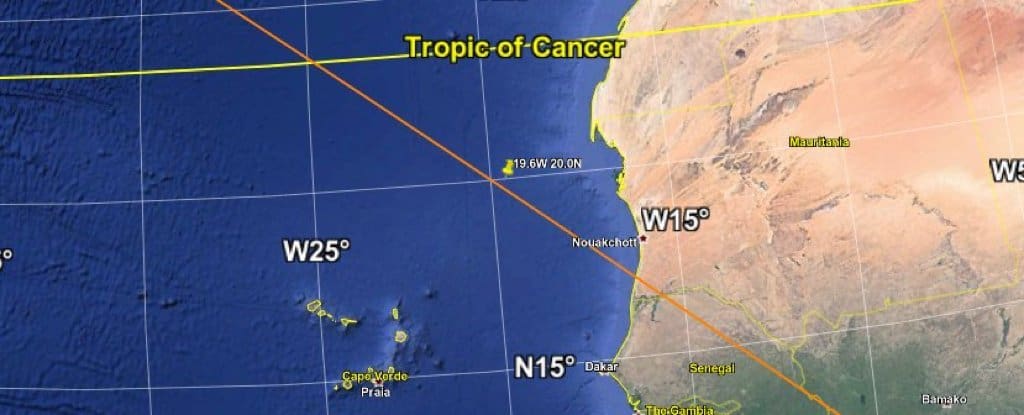
The remains of a giant segment of a Chinese rocket crash-landed in the Atlantic Ocean this week, representing the most significant uncontrolled descent of a piece of human-made space debris in decades.
The core stage of a Chinese Long March 5B (CZ–5B) rocket, which was successfully launched on May 5, spent several days in orbit as part of its mission, before re-entering Earth’s atmosphere and falling to Earth, splashing down in ocean waters off the west coast of Mauritania in northwest Africa.
The descent, which was eventually confirmed by the 18th Space Control Squadron, a unit of the US Air Force, was notable not just for its huge mass, but also for the extent of the window of uncontrolled descent, which had space-object trackers guessing just where and when the out-of-control rocket would eventually land.
“At 17.8 tonnes, it is the most massive object to make an uncontrolled reentry since the 39-tonne Salyut–7 in 1991, unless you count OV–102 Columbia in 2003,” tweeted astronomer Jonathan McDowell from the Harvard-Smithsonian Centre for Astrophysics.
While the de-orbiting of the CZ–5B rocket might have been uncontrolled, it was not unplanned. Throughout history, space launches have entailed vast amounts of spacecraft and components re-entering Earth’s atmosphere as debris, sometimes in controlled or partially controlled manoeuvres, but often in uncontrolled descents.
Even so, McDowell says the fall of the CZ–5B was an unusual event. “I’ve never seen a major reentry pass directly over so many major conurbations!” he tweeted.
Thankfully, the parts of the 30-metre-long (98 ft) core stage that didn’t burn up during re-entry, also didn’t end up falling on inhabited land. This was considered a vague possibility, with observers guessing the rocket’s remains might potentially land in Australia, US, or Africa.
While such an eventuality could almost certainly involve a loss of life, such an incident is generally considered unlikely, given how much of Earth’s surface constitutes uninhabited land or ocean. In any case, McDowell downplays the dangers.
“For a large object like this, dense pieces like parts of the rocket engines could survive reentry and crash to Earth,” McDowell told CNN.
“Once they reach the lower atmosphere they are travelling relatively slowly, so worst case is they could take out a house.”
The CZ–5B launched last week to transport an experimental prototype spacecraft into orbit, called the Chinese next-generation crewed spacecraft, which successfully landed back on Earth after a couple of days of testing in orbit.
“The successful landing of the new spacecraft from a high orbit also shows China is serious about sending astronauts beyond low Earth orbit – something only NASA has achieved – and eventually sending its astronauts to the Moon,” SpaceNews reporter Andrew Jones told AFP.